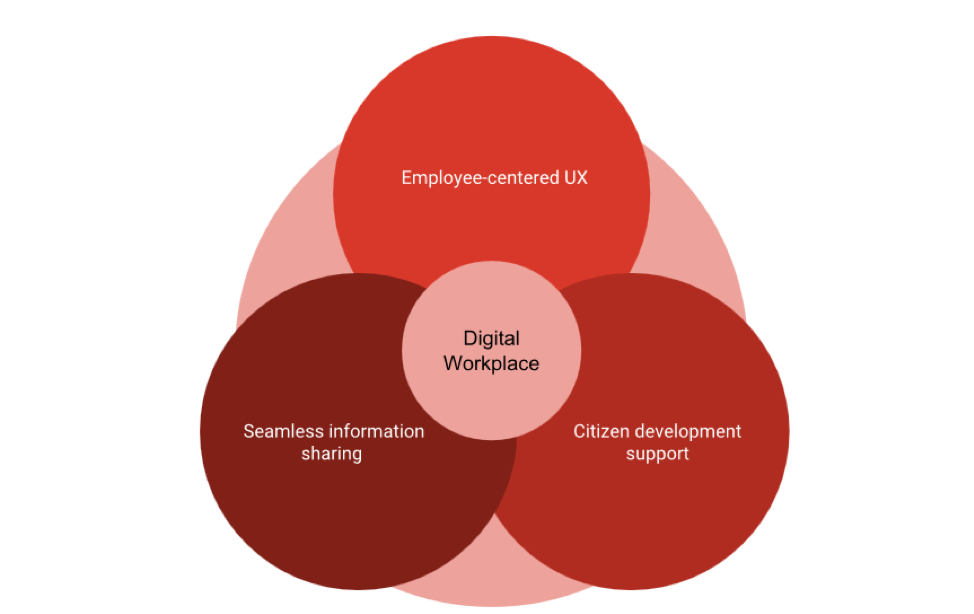Comments (3)
Chris Maunder
These are great advices! Thank you.
Mary Leigh
I liked the way that you tell about anything. Thanks for your all these simple and interesting posts.
Kumar Mohit
Good article

Creating a successful digital workplace should involve a focus on employee-centred user experience, seamless information sharing, and citizen development support.
A digital workplace, which is the digital interface that connects employees to a business, is the new frontier in technology that organizations are rushing towards Digital workplaces are expected to improve the overall business performance. Having a digital workplace requires more than having a number of general business applications that do little more than tracking employee activity. To create a truly successful digital workplace, the application leaders in an organization should focus on enhancing two-way sharing of information between the organization and the workforce, making the interface intuitively easy to use, and supporting citizen development.

Application leaders should focus on creating digital workplace applications that provide employees a convenient platform, which enables them to perform their functions despite interruptions and mobility. These applications should be simple and highly specialized to perform only the functions that the user requires. All those functions that do not apply to the user’s requirements should be eliminated.
A smaller number of heavy, complicated applications should be replaced by a greater number of lightweight, single-purpose applications. For instance, employees serving in sales and those serving in accounts should be issued functionally different applications, instead of being forced to navigate through a general purpose application.
Having a generalized application for all the employees leads to inefficiencies during usage due to the complexity involved, which is undesirable. All the complexities of the digital workplace program should be kept out of the front-end applications, but organization-wide integration should be maintained in the back-end. This ensures a simplified employee user experience while maintaining the channels for information sharing. Applying design thinking methodology for the development of an application ensures the creation of highly employee-focused applications.
Making quick and effective decisions requires access to the right type of information at the right time. Employees who need real-time information to solve problems must be given access to all the necessary data by the organization, all the time. As the modern workplace continues to change, the workforce is shifting towards mobility, necessitating seamless information transfer between the organization’s knowledge base and the employees’ mobile devices. These devices may run on different platforms, requiring development teams to create user applications for all the possible platforms.
The information sharing capability should also enable interconnectivity between employees, as collaborative functioning is becoming an integral part of the modern workplace. For instance, in the field of healthcare emergency, interns or nurses should be able to connect and consult with specialists in case of their physical absence.
Citizen development is a modern concept that enables end-users to design applications that serve their needs, without needing programming knowledge. This takes user-centric application development to the next level by empowering the potential users of the applications to act as developers, to complement the specialist application development teams.
Involving end-users in application development should not mean allowing unregulated levels of customization, as too much customization may also be detrimental to the design process. Application development leaders should find the right balance between standardization and customization.
Creating a digital workplace should be carried out by focusing on employee benefits, and tying these benefits to the desired business outcomes, i.e. the digital workplace applications deployed should enable employees to make more impactful contributions to the business strategy. The increasing ease of application development not only justifies but also mandates constant reassessment and improvement of the applications to suit the evolving needs of the workforce.
These are great advices! Thank you.
I liked the way that you tell about anything. Thanks for your all these simple and interesting posts.
Good article
Naveen is the Founder and CEO of Allerin, a software solutions provider that delivers innovative and agile solutions that enable to automate, inspire and impress. He is a seasoned professional with more than 20 years of experience, with extensive experience in customizing open source products for cost optimizations of large scale IT deployment. He is currently working on Internet of Things solutions with Big Data Analytics. Naveen completed his programming qualifications in various Indian institutes.
Leave your comments
Post comment as a guest